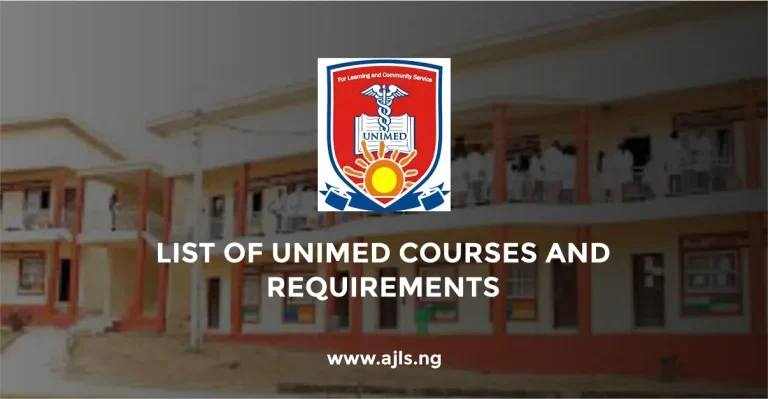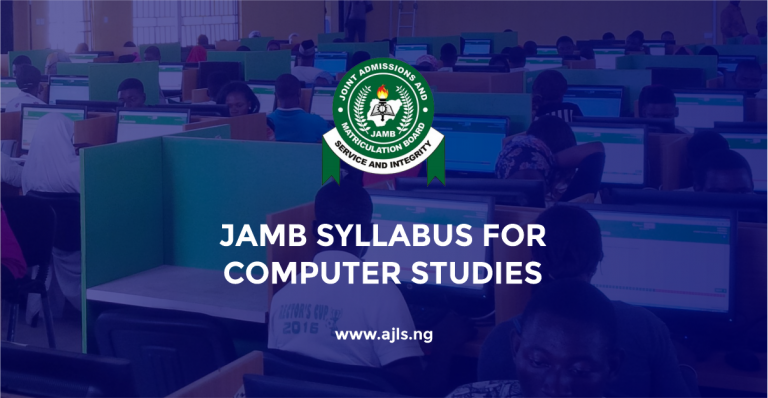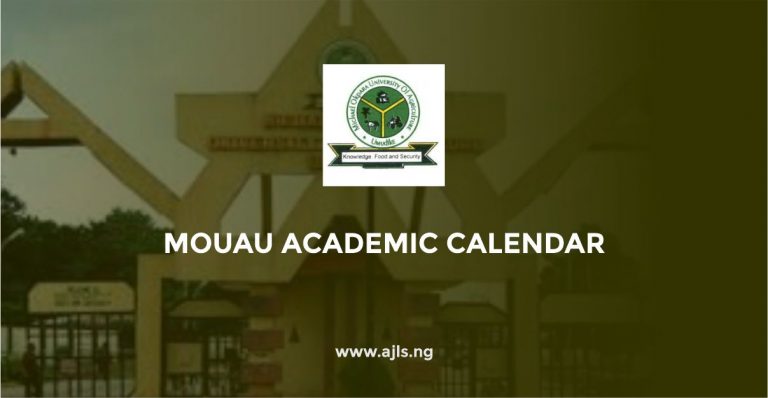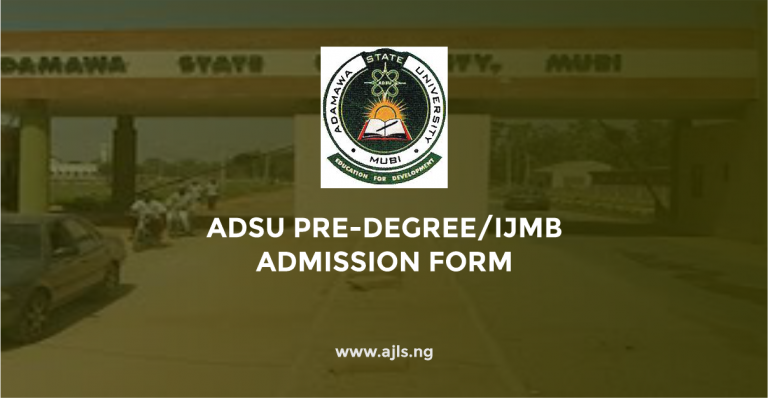JAMB Syllabus for Principles of Accounts
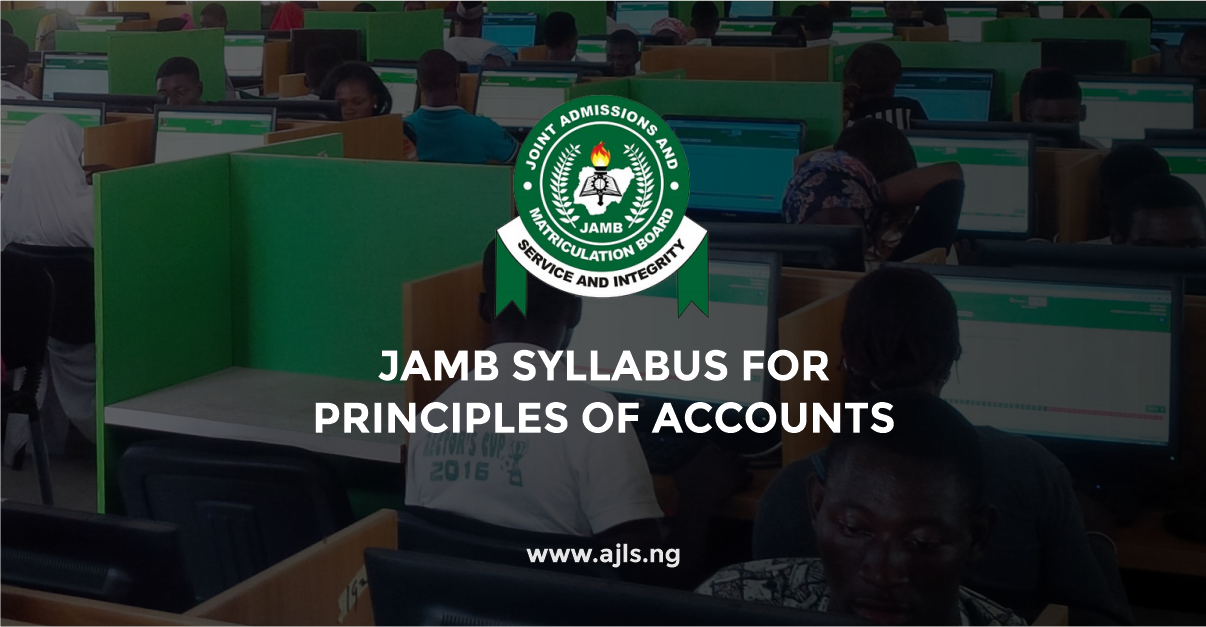
Accounting is a fundamental field of study that provides students with the knowledge and skills to understand financial transactions, manage business resources, and interpret financial data. The JAMB (Joint Admissions and Matriculation Board) Syllabus for Principles of Accounts serves as a comprehensive guide for students preparing for the UTME (Unified Tertiary Matriculation Examination) in Nigeria. The JAMB Syllabus for Principles of Accounts outlines key topics and learning objectives that enable students to develop a strong grasp of accounting concepts, principles, and practical applications.
The JAMB Syllabus for Principles of Accounts is structured to guide students through various aspects of accounting, from the basic principles to more complex areas such as financial statements, bank reconciliation, and accounting for different types of organizations. By exploring the development of accounting, its principles, and the tools used in financial reporting, students are prepared to analyze and solve accounting problems effectively.
Through this syllabus, students will be able to differentiate between core accounting concepts such as bookkeeping and accounting, understand the role of accounting information in decision-making, and gain proficiency in preparing and interpreting financial statements. Whether in a business context, government accounting, or non-profit sectors, the knowledge acquired will help students build a solid foundation for future study and professional endeavors in accounting. This article will show you everything you need to know about the JAMB Syllabus for Accounting and the Jamb recommended textbooks. Read carefully to understand!
JAMB Syllabus for Principles of Accounts 2025
The JAMB syllabus for Principles of Accounts equips students with the necessary skills to succeed in their exams while fostering a deeper understanding of various aspects of accounting from basic book-keeping principles to more complex concepts like financial statements and stock valuation. Here are the topics and objectives in the JAMB syllabus for Principles of Accounts:
1. Nature and Significance of Accounting
- Development of Accounting: This covers the history and growth of accounting and its branches, such as Financial Accounting, Management Accounting, Cost Accounting, Auditing, and Taxation.
- Objectives of Bookkeeping and Accounting: This explains the goals of recording financial transactions and summarizing them in a way that helps businesses understand their financial situation.
- Users and Characteristics of Accounting Information: This explains who uses accounting data (e.g., managers, investors, creditors) and what makes it useful (e.g., accuracy, relevance).
- Principles, Concepts, and Conventions: This involves the fundamental rules and standards that guide accounting practices, such as consistency and reliability.
- Role of Accounting Records and Information: This highlights how accounting data helps in decision-making, planning, and controlling business activities.
2. Principles of Double Entry
- Source Documents: Understanding documents like invoices, receipts, and bills that record transactions.
- Books of Original Entry: This includes the journals where transactions are first recorded before being transferred to the ledger.
- Accounting Equation: It refers to the formula: Assets = Liabilities + Owner’s Equity, which helps track a business’s financial position.
- The Ledger: This is a book where all transactions are summarized. It’s divided into different types like the cash book and sales book.
- Trial Balance: This is a list of all ledger accounts and their balances used to check the accuracy of accounting records.
- Types and Treatment of Errors: This involves identifying and correcting mistakes in accounting records.
- Suspense Account: A temporary account used to hold transactions when errors are found but cannot yet be resolved.
3. Ethics in Accounting
- Objectives of Ethics: Learning about honesty, fairness, and transparency in preparing financial reports.
- Qualities of an Accountant: Important qualities like integrity, accountability, and professionalism that every accountant should have.
4. Cashbook
- Columnar Cashbooks: A type of cashbook with multiple columns for tracking different types of transactions (like cash and bank).
- Discounts: Understanding the difference between trade and cash discounts and how they are recorded.
- Petty Cashbook & Imprest System: A petty cashbook is used to track small, everyday expenses, and the imprest system ensures there’s always a fixed amount of money available for these expenses.
5. Bank Transactions and Reconciliation Statements
- Bank Transactions: Includes cheques, pay-in slips, and online banking systems used for payments and receipts.
- Bank Reconciliation: This is the process of matching the cashbook’s balance with the bank statement to identify any discrepancies.
6. The Final Accounts of a Sole Trader
- Income Statement (Trading & Profit & Loss Account): This shows a sole trader’s revenue and expenses to calculate profit or loss.
- Statement of Financial Position (Balance Sheet): A snapshot of the business’s financial position, listing assets, liabilities, and equity.
- Adjustments: Includes things like provisions for bad debts, discounts, depreciation, and accruals.
7. Stock Valuation
- Methods of Cost Determination: Explains different ways to calculate stock costs, such as FIFO (First In, First Out), LIFO (Last In, First Out), and the simple average method.
- Advantages and Disadvantages: Discusses the pros and cons of these stock valuation methods.
- Importance of Stock Valuation: Highlights how stock valuation impacts profit and financial reporting.
8. Control Accounts and Self-Balancing Ledgers
- Control Accounts: These are summary accounts used to check the accuracy of individual accounts (like sales or purchases).
- Purchases and Sales Ledger Control Accounts: These specific control accounts help manage and monitor individual transactions related to purchases and sales.
9. Incomplete Records and Single Entry
- Converting Single Entry to Double Entry: Turning incomplete records into fully detailed double-entry accounting records.
- Determining Missing Figures: Identifying missing amounts by converting single-entry records into double-entry.
- Preparing Final Accounts from Incomplete Records: Making profit and loss accounts and balance sheets from incomplete data.
10. Manufacturing Accounts
- Cost Classification and Apportionment: Breaking down manufacturing costs and distributing them correctly to different areas (like production or sales).
- Preparation of Manufacturing Accounts: Creating detailed accounts that show the cost of producing goods, including direct costs and overhead.
11. Accounts of Not-For-Profit-Making Organizations
- Objectives of Not-For-Profit Organizations: Understanding the unique nature of these organizations, such as charities or schools, and their financial goals.
- Receipts and Payments Account: This account shows cash inflows and outflows for such organizations.
- Income and Expenditure Account: It tracks income and costs to measure the surplus or deficit.
- Statement of Financial Position: A balance sheet that lists the financial position of a not-for-profit organization.
12. Departmental Accounts
- Apportionment of Expenses: How to allocate shared expenses across different departments.
- Departmental Trading and Profit & Loss Account: Calculating the profits or losses of individual departments within a business.
13. Branch Accounts
- Objectives: Learn why branch accounts are necessary for businesses with multiple locations.
- Branch Accounts in the Head Office Books: How transactions and records for branches are handled in the head office accounts.
- Head Office Account: The account that tracks the financial activities between the head office and its branches.
- Reconciliation of Branch and Head Office Books: Understanding how to match the records of the branch and head office to resolve differences.
14. Joint Venture Accounts
- Objectives: Explore the reasons for joint ventures and how profits and losses are shared.
- Personal Accounts of Venturers: Tracking the contributions and profits of each partner in the joint venture.
- Memorandum Joint Venture Accounts: A method for recording joint venture transactions, often for temporary ventures.
15. Partnership Accounts
- Formation of Partnership: Understanding the legal and financial steps involved in starting a partnership.
- Profit and Loss Account: The way partners share the profits or losses of the business.
- Appropriation Account: A special account used to divide profits between the partners according to their agreement.
- Partners’ Current and Capital Accounts: Accounts for tracking each partner’s contributions and withdrawals.
- Treatment of Goodwill: How to account for goodwill when a new partner joins or when valuing the business.
- Admission/Retirement of a Partner: Managing financial changes when a partner enters or leaves the business.
- Dissolution of Partnership: How to end a partnership and distribute the remaining assets and liabilities.
- Conversion of a Partnership to a Company: The process of changing a partnership into a company structure.
16. Introduction to Company Accounts
- Formation and Classification of Companies: How companies are created and classified (e.g., private or public).
- Issue of Shares and Debentures: Understanding how companies raise capital by selling shares and issuing loans (debentures).
- Final Accounts of Companies: Creating financial statements for companies, including income statements and balance sheets.
- Interpretation of Accounts Using Ratios: Analyzing financial performance using ratios like profitability and liquidity ratios.
- Distinction Between Capital and Revenue Reserves: Understanding the difference between funds set aside for future use (capital) and those for day-to-day operations (revenue).
17. Public Sector Accounting
- Comparison of Cash and Accrual Basis: Learn the difference between cash-based accounting (recording transactions when cash is exchanged) and accrual-based accounting (recording when transactions occur, regardless of cash flow).
- Sources of Government Revenue: Identifying where the government gets its money, such as taxes and other forms of income.
- Capital and Recurrent Expenditure: Understanding the distinction between long-term investments (capital) and ongoing expenses (recurrent).
- Consolidated Revenue Fund: The main fund that holds government revenue, including taxes, for national spending.
- Statement of Assets and Liabilities: A financial report showing what the government owns and owes.
- Responsibilities and Powers: Explains the duties of key government officials like the Accountant General, Auditor General, and the Minister of Finance.
- Instruments of Financial Regulation: Understanding how the government ensures financial control, such as budgets, votes, and authority to spend.
18. Information Technology in Accounting
- Manual and Computerized Accounting Systems: Comparing traditional record-keeping methods with digital accounting systems.
- Processes Involved in Data Processing: The steps involved in managing and processing accounting data, both manually and with software.
- Computer Hardware and Software: The tools needed to run computerized accounting systems.
- Advantages and Disadvantages: Discuss the benefits (like speed and accuracy) and drawbacks (such as cost and complexity) of using technology for accounting.
JAMB Recommended Texts for Principles of Accounts
These books recommended by JAMB cover a range of topics, from foundational accounting to specific sectors like government accounting, and they are highly recommended for students preparing for exams in accounting principles.
Here is a list of suggested textbooks for studying Principles of Accounting, each offering unique insights into various accounting areas:
- Abdullahi D. Z. (2014) – Modern Financial Accounting, Husab Global Press Concept Ltd.
- Adeifa O. Ajileye, J. O and Oluwasanna, R. O (2001) – Get Your Financial Accounting Right, Book One, Oyo: Tenlad Press International.
- Ajileye, J. O. and Adetifa O. (2001) – Get Your Financial Accounting Right, Book Two, Lagos: De Hadey Printing Services.
- Akinduko, A. O (2001) – Basic Accounting, Akure: Spetins.
- Awoyemi, E. O. (1989) – A Guide to Government Accounting and Internal Audit, Ibadan: Onibonje Press.
- Dodge, R. (2002) – Foundations of Business Accounting (Second Edition), Berkshire: Chapman and Hall.
- Ekwere, A. B. (1997) – Contemporary Accounting, Abuja: Aflon Finance.
- Ekwue K. C. (2010) – Principles of Accounts, Book 1 & 2, Adson Publishing Company, Onitsha.
- Femi L. (2013) – Simplified and Amplified Financial Accounting.
- Frankwood and Alan S. (2002) – Frankwood’s Business Accounting, Prentice Hall International Edition.
- Hassan M. M. (2001) – Government Accounting, Lagos: Malthouse Press Limited.
- Igben, R. O. (2004) – Financial Accounting Made Simple (Vol. I), Lagos: Roi Publishers.
- Longe, O. A. and Kazeem, R. A. (2006) – Essential Financial Accounting for Senior Secondary Schools, Lagos: Tonad Publishers Limited.
- Millichamp, A. H. (1989) – Foundation Accounting: An Introduction Manual for Accounting Students, London: DP Publications.
- Okwoli, A. A. (1995) – Financial Accounting, Zaria: Tamaza Publishers.
- Oshisami, K. (1997) – Government Accounting and Financial Control, Ibadan: Spectrum.
We believe this article helps you to know the JAMB Syllabus for Principles of Accounts. For more inquiries do well to drop your questions in the comment box for a prompt response or visit the official JAMB website.
